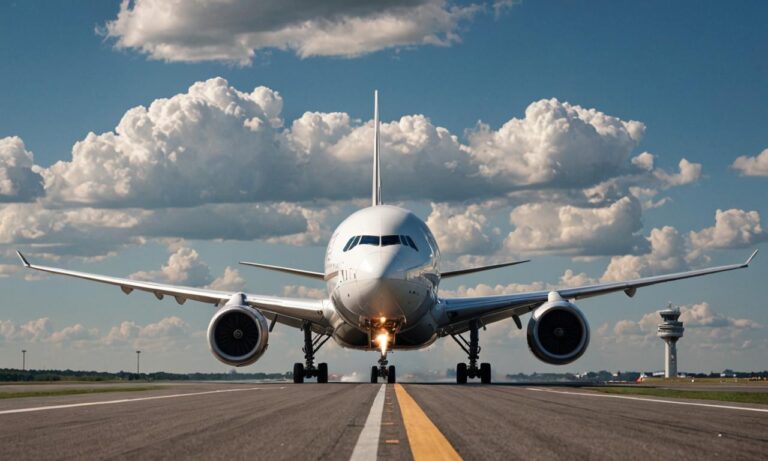When it comes to the realm of commercial aviation, the debate surrounding the Airbus A380 and Boeing 787 continues to spark interest and discussion. Both aircraft represent significant advancements in modern aviation technology, each with its own set of unique features and capabilities.
Size and Capacity
One of the most notable distinctions between the Airbus A380 and the Boeing 787 lies in their size and passenger capacity. The Airbus A380, often dubbed as the “superjumbo,” boasts the title of being the largest passenger airliner in the world. With a typical seating capacity ranging from 500 to 850 passengers, depending on the configuration, the A380 is designed to cater to high-density routes and airports with heavy traffic.
On the other hand, the Boeing 787, also known as the “Dreamliner,” is a mid-size, wide-body aircraft that prioritizes fuel efficiency and range. While it cannot match the A380 in sheer passenger capacity, the 787 offers a more versatile option for airlines, with seating for approximately 200 to 300 passengers.
Range and Efficiency
Efficiency is a key consideration for airlines, particularly in an industry where fuel costs can significantly impact profitability. The Boeing 787 excels in this aspect, thanks to its advanced composite materials and aerodynamic design. This enables the Dreamliner to achieve impressive fuel efficiency, reducing operational costs for airlines while offering extended range capabilities.
While the Airbus A380 prioritizes capacity over efficiency, it still incorporates various technological innovations aimed at enhancing fuel efficiency. However, due to its larger size and capacity, the A380 is often deployed on high-traffic, short- to medium-haul routes where its capacity can be fully utilized.
Comfort and Passenger Experience
Passenger comfort is a crucial factor for airlines looking to attract and retain customers. Both the Airbus A380 and Boeing 787 prioritize passenger experience, albeit in different ways. The A380’s spacious cabin design allows for greater flexibility in seating arrangements, offering passengers a more comfortable and enjoyable journey.
On the other hand, the Boeing 787 focuses on enhancing the overall passenger experience through features such as larger windows, higher cabin humidity levels, and improved air quality. These elements contribute to a more pleasant and comfortable flying experience, particularly on long-haul flights.
Market Demand and Future Prospects
In recent years, market demand for large-capacity aircraft like the Airbus A380 has waned, with airlines increasingly favoring smaller, more fuel-efficient alternatives such as the Boeing 787. This shift in preference has prompted Airbus to announce the discontinuation of A380 production, signaling a pivot towards more sustainable and economically viable aircraft models.
Conversely, the Boeing 787 continues to garner significant interest from airlines worldwide, with its fuel-efficient design and long-range capabilities aligning well with evolving market trends and passenger preferences. As air travel demand rebounds and airlines seek to optimize their fleets, the Boeing 787 is poised to remain a prominent fixture in the global aviation landscape.
While both the Airbus A380 and Boeing 787 have their own strengths and advantages, the evolution of the commercial aviation industry has led to a shift in demand towards more fuel-efficient and versatile aircraft models. As airlines adapt to changing market dynamics and passenger preferences, the Boeing 787 emerges as a frontrunner in shaping the future of air travel, offering a compelling blend of efficiency, comfort, and range.
Environmental Impact
Environmental considerations are increasingly important in the aviation industry. While both the Airbus A380 and Boeing 787 have made strides in efficiency, the smaller size and more advanced materials of the 787 typically result in lower carbon emissions per passenger compared to the A380. Airlines are becoming more conscious of their environmental footprint, which may influence future purchasing decisions.
Operational Flexibility
Operational flexibility is crucial for airlines to adapt to changing market demands and unforeseen circumstances. The Boeing 787’s smaller size and greater range make it more versatile for various route structures, including long-haul, transoceanic flights, and thinner routes where demand might not justify the capacity of an A380. This flexibility gives airlines more options in route planning and fleet management.
Frequently Asked Questions
1. Which aircraft is more commonly used for short-haul flights?
Short-haul flights typically involve routes with lower passenger demand. Airlines often opt for smaller aircraft like the Boeing 787 for these routes due to its lower capacity and better fuel efficiency compared to the Airbus A380.
2. Are there any notable technological differences between the two aircraft?
While both aircraft incorporate advanced technology, the Boeing 787 stands out for its extensive use of composite materials, which contribute to its lightweight construction and fuel efficiency. The A380, on the other hand, focuses more on sheer size and capacity rather than groundbreaking technological advancements.
| Aspect | Airbus A380 | Boeing 787 |
|---|---|---|
| Capacity | 500-850 passengers | 200-300 passengers |
| Range | Approximately 8,000 nautical miles | Approximately 7,355 to 8,200 nautical miles |
| Environmental Impact | Higher carbon emissions per passenger compared to the 787 | Lower carbon emissions per passenger |
See also:






